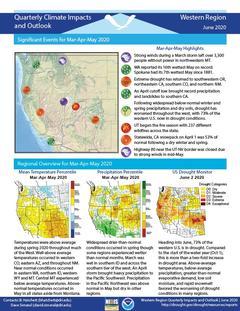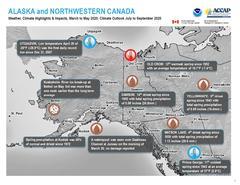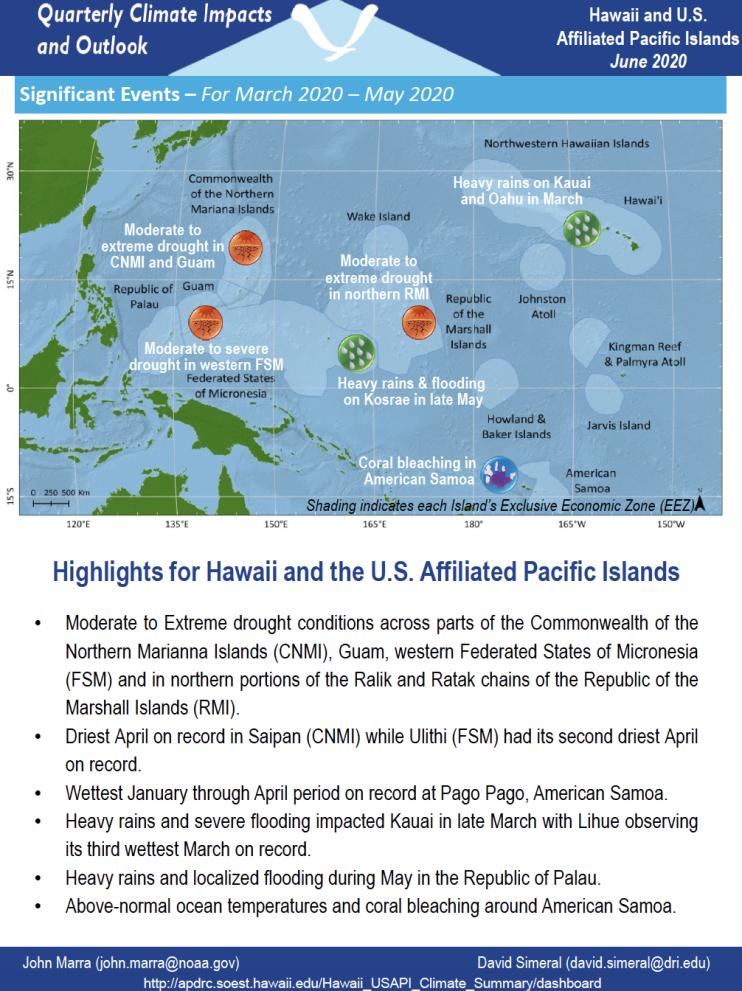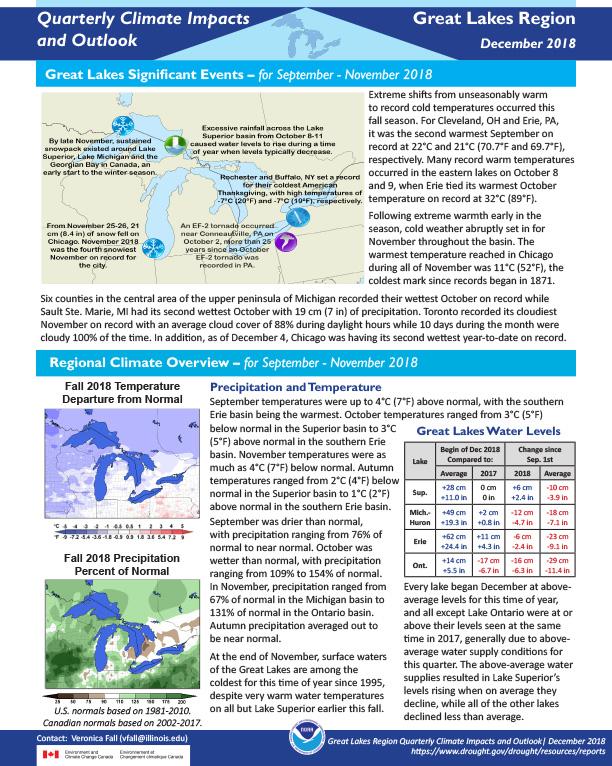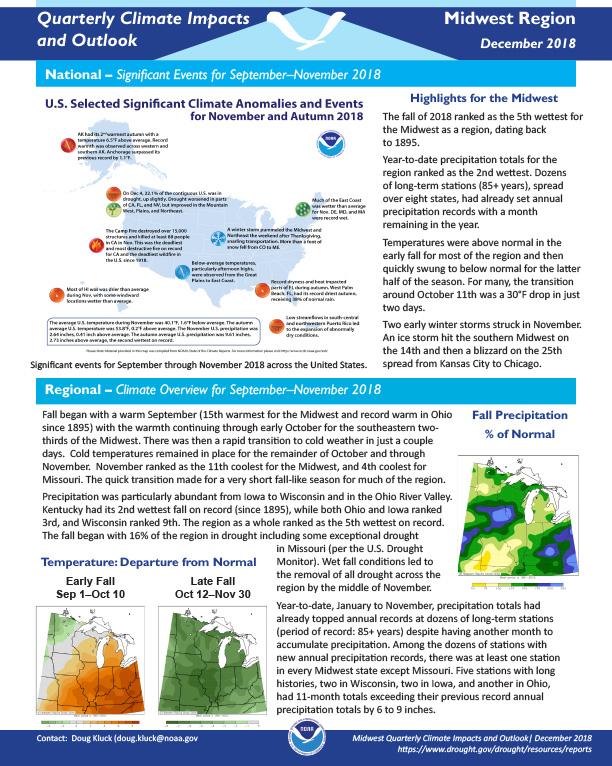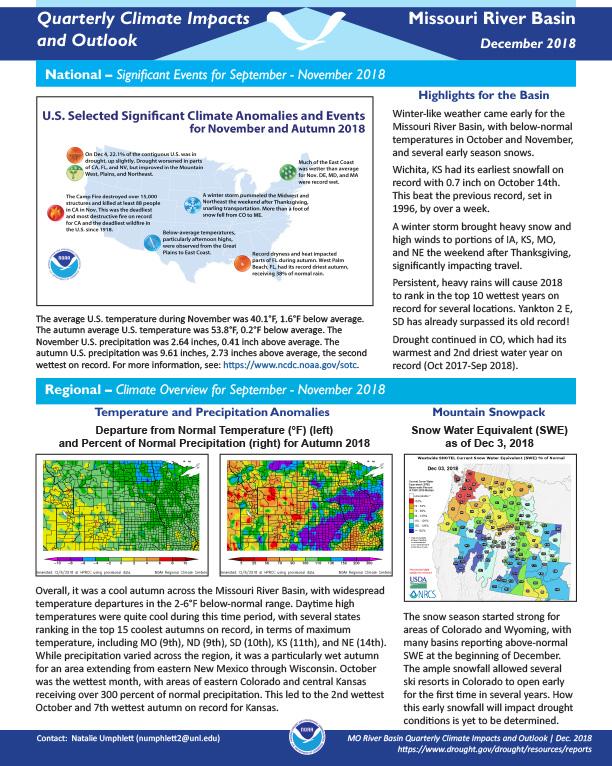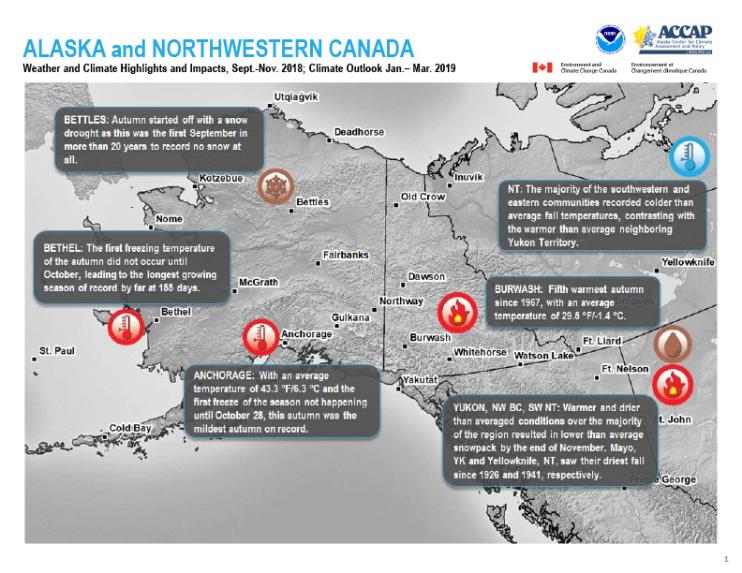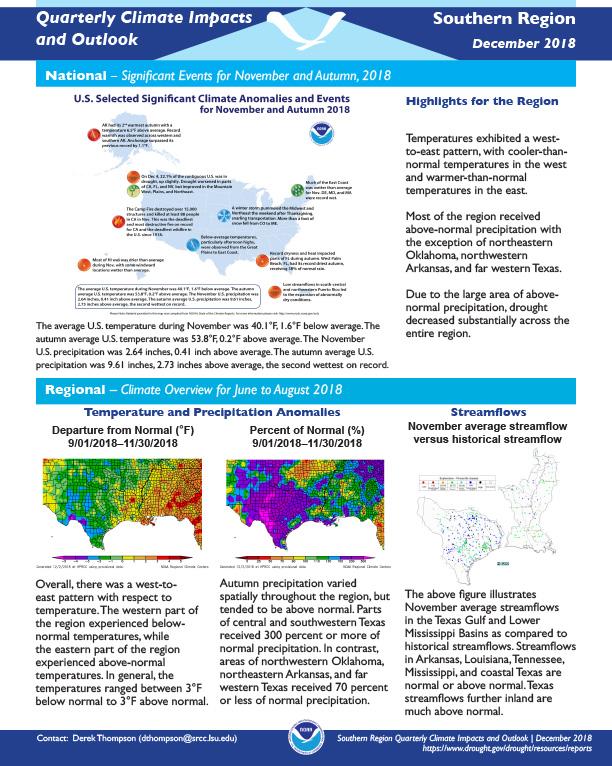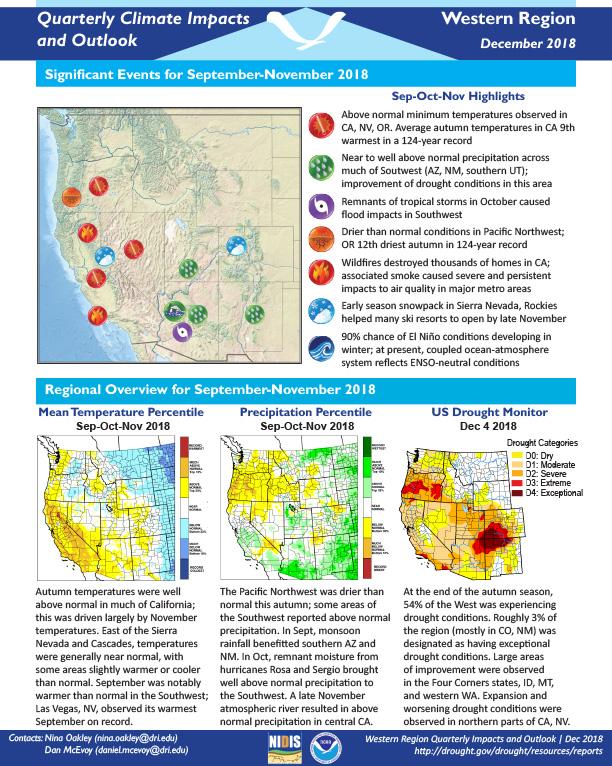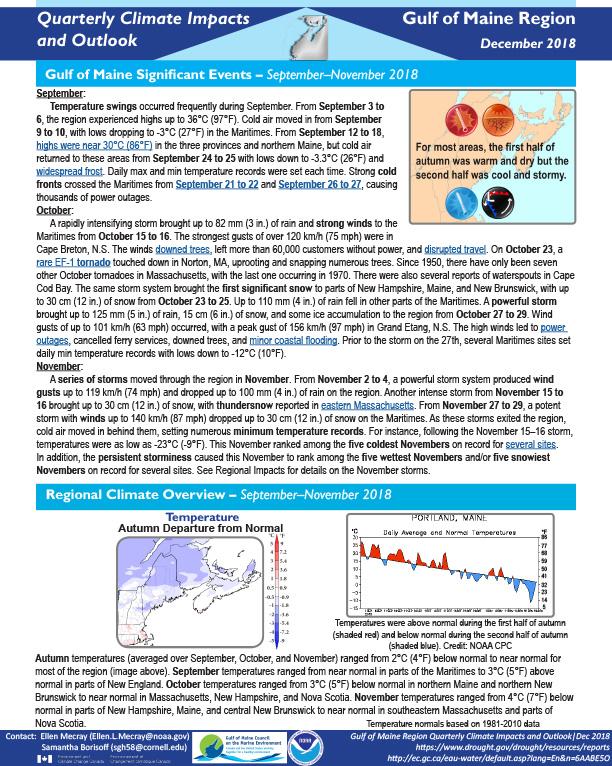Quarterly Climate Impacts and Outlook for the Western Region for March – May 2020. Dated June 2020.
Temperatures were above average during spring 2020 throughout much of the West. Widespread drier-than-normal conditions occurred in spring though some regions experienced wetter than normal months.
Quarterly Climate Impacts and Outlook for Alaska and Northwestern Canada for March – May 2020; outlook for July – September 2020. Dated June 2020.
Quarterly Climate Impacts and Outlook for Hawaii and the U.S. Pacific Islands Region for March – May 2020. Dated June 2020.
Includes significant events, regional climate overview, and sectoral impacts for March – May 2020; regional outlook for June – August 2020.
Quarterly Climate Impacts and Outlook for the Great Lakes Region for September – November 2018. Dated December 2018.
Extreme shifts from unseasonably warm to record cold temperatures occurred this fall season. Autumn precipitation averaged out to be near normal.
Quarterly Climate Impacts and Outlook for the Midwest Region for September – November 2018. Dated December 2018.
Fall began with a warm September (15th warmest for the Midwest and record warm in Ohio since 1895) with the warmth continuing through early October for the southeastern two thirds of the Midwest. Precipitation was particularly abundant from Iowa to Wisconsin and in the Ohio River Valley.
Quarterly Climate Impacts and Outlook for the Missouri River Basin September – November 2018. Dated December 2018.
Overall, it was a cool autumn across the Missouri River Basin, with widespread temperature departures in the 2-6°F below-normal range. While precipitation varied across the region, it was a particularly wet autumn for an area extending from eastern New Mexico through Wisconsin.
Quarterly Climate Impacts and Outlook for Alaska and Northwestern Canada for September – November 2018; outlook for January – March 2019. Dated December 2018.
Between September and November 2018, Alaska, the majority of the Yukon Territory, and a small portion of northwestern Northwest Territories (NT) experienced warmer than average conditions. Total precipitation between September and November was below average over a small area in northwestern Alaska, and across a band spanning southern Alaska, southern Yukon, and southern NT.
Quarterly Climate Impacts and Outlook for the Southern Region for September – November 2018. Dated December 2018.
Temperatures exhibited a west-to-east pattern, with cooler-than-normal temperatures in the west and warmer-than-normal temperatures in the east. Most of the region received above-normal precipitation with the exception of northeastern Oklahoma, northwestern Arkansas, and far western Texas.
Quarterly Climate Impacts and Outlook for the Western Region for September – November 2018. Dated December 2018.
Above normal minimum temperatures were observed in California, Nevada, and Oregon. Near to well above normal precipitation was observed across much of the Southwest (Arizona, New Mexico, and southern UT) with an improvement of drought conditions in this area.
Quarterly Climate Impacts and Outlook for the Gulf of Maine Region for September – November 2018. Dated December 2018.
Autumn temperatures ranged from 2°C (4°F) below normal to near normal for most of the region. Autumn precipitation generally ranged from 75% of normal in northern New Brunswick to 200% of normal in southeastern Massachusetts.


